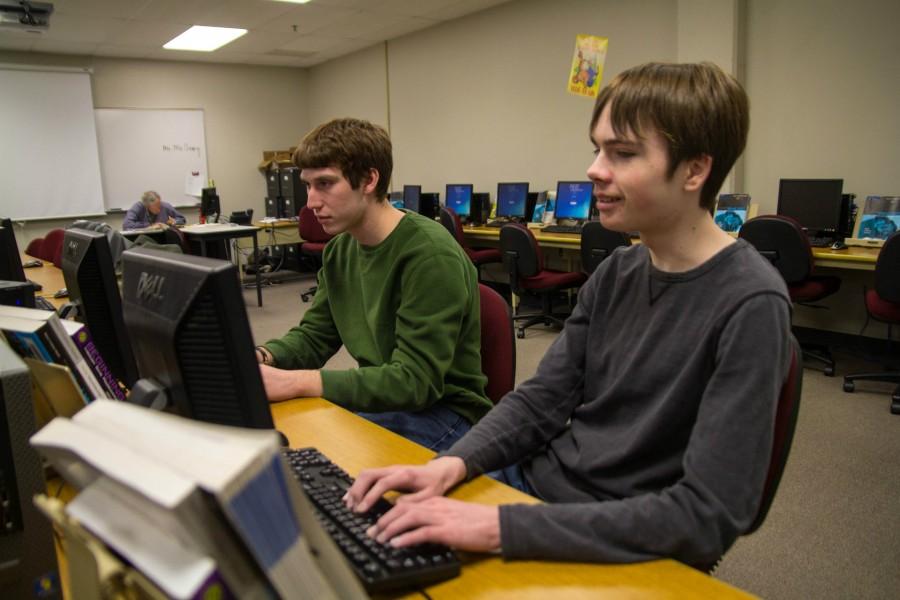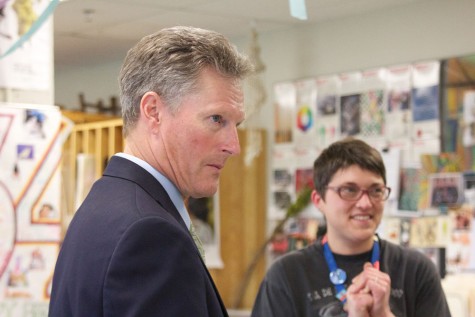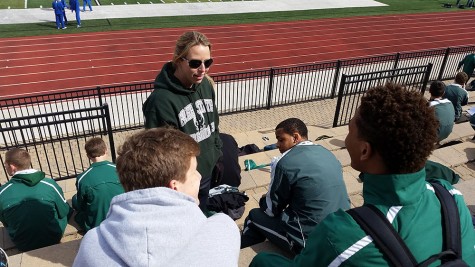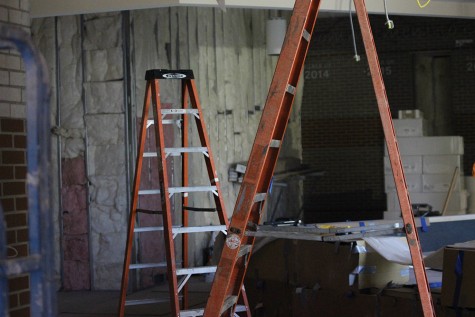The IT Crowd: Students aid with school tech problems
Zach Moore is an intern for the IT department at Free State. He fills work orders and helps Mr. Romero the main IT technician for Free State. “I tend to work for an Hour after school,” Said Moore.
Under the supervision of building technician Ismael Romero, seniors Zach Moore, Kerry Thomas and Tom Brooks work to figure out why a Macbook Air won’t turn on. The culprit: a disconnected power cord.
Earlier this semester, these seniors volunteered to assist Romero with technical problems throughout the building, a job from which the district’s division of Educational Programs and Technology previously restricted students until assistant Superintendent Jerri Kemble was tapped to head the division.
“This was the first time Patrick [Kelly, director of career and technical education] and I had been approached with it, and we loved the idea,” Kemble said. “… It’s kind of like project-based learning. We’d like to provide more of those experiences for students, so that they have a real world experience. We feel like they put a lot into that, they’re interested in it and they learn a lot from it.”
Kelly suggested students help out with building-level IT problems after students expressed interest and members of the district collaborated to create a plan for the program.
“There’s a lot of behind the scenes work that has to go on to make sure that everybody feels like we can support the students in a way that’s positive for them, so that just takes time,” Kelly said. “So I don’t think it was any one person in particular, it just is continually … asking questions and seeking answers that makes these things happen.”
Since the program began recently, Romero still feels his presence is necessary while the students work.
“[The students] don’t have an employee badge, so after some time, I guess that the teachers will get to know them,” Romero said. “When they walk in the classroom, they will know who they are and what they are doing, but right now I need to go with them.”
Before the students could assist Romero, they went through an application process which included participating in an interview, filling out an application and submitting a résumé.
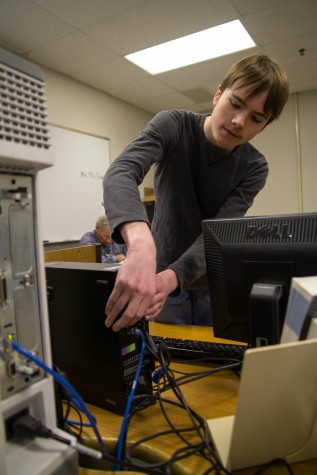
Tom Brooks fills IT work orders for Free State. “The problem I have to fix most is computers not logging into the system,” Said Brooks. “I have about 5 work orders to fill each week.”
“It was kind of stressful—it was like an actual interview,” Moore said. “You just sit in there with a panel of adults you’ve never met before asking you different questions.”
Moore provided examples of the panel’s questions.
“‘Where do you see yourself in five years?’” Moore said. “‘What are you good at? What’s your favorite class in school?’ They asked, ‘If I told you the iPhone was the greatest phone, what would you tell me?’”
Although Career Technical Education teacher Matt Gudenkauf is not directly involved with the group’s day-to-day activities, he recruited the students and developed a plan with Kemble, Kelly and other members of the district’s technology departments.
Members considered switching Gudenkauf’s Media Technology class to an internship class, so the students could work with Romero during that hour.
“I wanted to keep the class the way it is because what they get out of the class is invaluable, and it’s quite a bit different than what the internship is providing,” Gudenkauf said.
In the end, the class remained the same, and the students agreed to meet with Romero after school to complete their assigned tasks.
While these students are allowed to assist with technological problems, they are not granted administrative rights on district computers.
“There will be days when even though I have things to do, there won’t be things for them to do because it requires administrative rights and, not being formal employees, they cannot be given those rights,” Romero said. “It’s not that we don’t trust them, but there are protocols to follow. Now, if they come with me, then I can enter my credentials, and they can work on them, just for the sake of training.”
Sensitive information becomes accessible with administrative rights, which is another reason students will not be given that level of permission.
“There might be something that would have to do with grades or attendance or something,” Kemble said. “If someone was having a problem with that, we would have someone else in the department handle that, so that they can’t get into those things and look at that kind of information.”
Those interviewed agree this program should prove beneficial in teaching the students skills that they may require for their future careers. Kemble and Kelly hope that this will be one of many ways to integrate hands-on learning into the district.
“We’d love to do things in business,” Kelly said. “We’d like to do things with our architecture program. Any of our programs, we’re looking for employers, and we’re looking for our teachers to be flexible in the way that they teach, so that students can have these types of opportunities.”
Your donation will support the student journalists of Lawrence Free State High School. Your contribution will allow us to purchase equipment and cover our annual website hosting costs.



